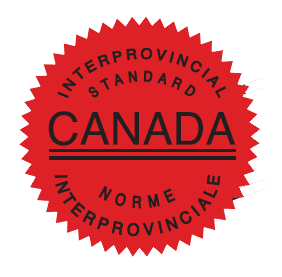As Faroe Woodworks was in the process of launching, and as I was passing out the company business cards or directing people to the company Instagram and Facebook account, questions of what a Red Seal carpenter means became common. The Interprovincial Red Seal Program establishes standards and regulations for common, designated trades throughout Canada. From boilermakers to bakers to automotive technicians to hairstylists. Each trade has an apprenticeship in which the person accumulates work experience on the job and the necessary skills and training through separate blocks of schooling. At the end of the apprenticeship when one has gained the necessary hours of work and passed the blocks of schooling, they may challenge the Interprovincial Red Seal exam to become a licensed Red Seal Journeyperson. Some trades in Canada require a license to practice the work; a designated compulsory trade. This is why you want to hire licensed electricians, plumbers and HVAC technicians. They have to be licensed to do the work.
A general carpenter is known as a voluntary trade. One does not require a license to practice carpentry in Canada, except for Quebec where it is a compulsory trade. When one passes the apprenticeship and challenges the Red Seal exam as a carpenter in Ontario, one becomes a licensed Journeyperson in the Interprovincial Program. Although this license is not compulsory, the license is extremely useful.
The uses are many - the Interprovincial standard allows a licensed Red Seal carpenter to work anywhere in Canada at a recognized skill level. Most commercial construction companies hire licensed carpenters because they recognize the skills and training as some of the very best. One would need a carpenter's license to teach in any school or college, to work for the various levels of government or transit corporations, or to apply for carpentry jobs overseas with reputable International companies. It is not just the local carpenter unions that demand this education.
I challenged the Red Seal general carpenter's exam by putting together a package that demonstrated that I had worked over 10,000 hours in the trade and practiced equivalent skills to that of the apprenticeship. In addition to my many years of carpentry experience in the field, I also graduated with a diploma from the Building Renovation Technician program at George Brown College, in Toronto, where I studied and mentored under extremely talented Red Seal carpenters. It was a career goal for me to challenge the exam and to become a licensed Red Seal carpenter. My grandfather William Davies was a master licensed carpenter in Sarnia and it was through working with him and watching him build amazing things that I fell in love with carpentry. Teaching carpentry at the high school or college level is also something that I hope to do at some point in my career. I believe that the Red Seal license can simply define a carpenter; as both knowledgable and experienced.



